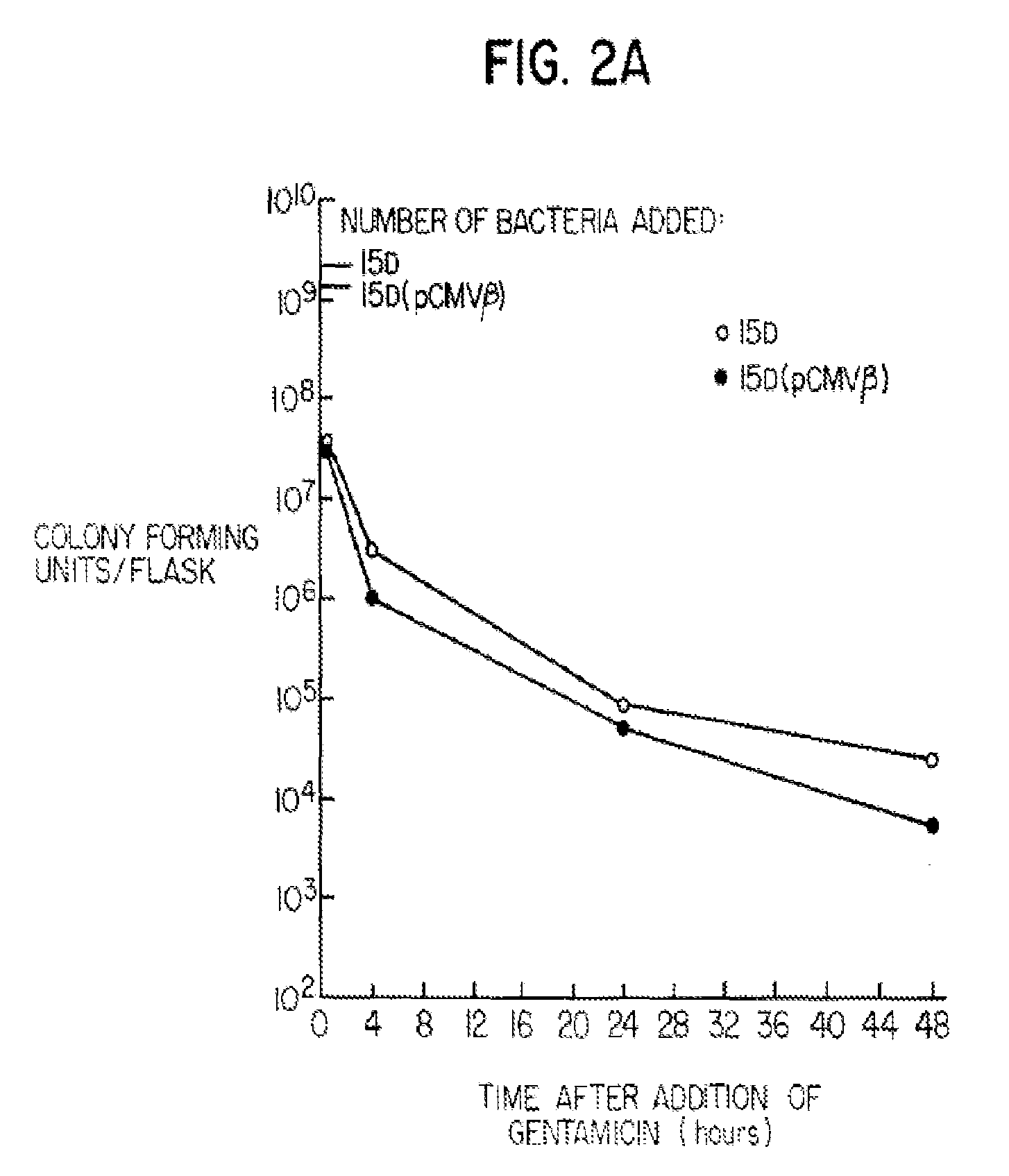Bacterial delivery system
a delivery system and bacteria technology, applied in the field of bacteria delivery system, can solve the problems of insufficient attenuation of strains for human use, no safe and effective vaccine, and insufficient protection against infection of parenteral shigella /i>, so as to reduce the symptoms of individual disease, the effect of mildening the symptoms of shigella infection
- Summary
- Abstract
- Description
- Claims
- Application Information
AI Technical Summary
Benefits of technology
Problems solved by technology
Method used
Image
Examples
example 1
[0063]Construction of an Attenuated S. flexneri 2a Strain
[0064]In constructing an appropriate strain, we chose to take advantage of the already popular conditional-lethal mutation system. A deletion mutation was made in the gene encoding ASD, an essential enzyme required for synthesizing the bacterial cell wall constituent diaminopimelic acid (DAP) (Nakayama et al. BioTechnology (1988) 6: 693). FIG. 1 illustrates the construction of 15D, a Δasd isolate of Shigella flexneri 2a strain 2457T. The gene encoding for E. coli asd (Haziza et al. EMBO J. (1982) 1: 379) was amplified using PCR, incorporating BglII restriction sites. asd was cloned into a previously described vector (Branstrom et al. Presented at the 33rd ICAAC, New Orleans, La., 20 Oct. 1993, Abstract #1136) and selected from using E. coli χ6097 (Nakayama et al., supra). The resulting pAB102 plasmid was reverse PCR amplified to delete 553 bp of the E. coli asd structural gene (position 439 to 991) [all primers given in a 5′ t...
example 2
[0065]Characterization of Isolate 15D
[0066]Strain 15D was able to maintain the commercially available eukaryotic expression vector pCMVβ without antibiotic selection. pCMVβ expresses E. coli β-galactosidase under the control of the immediate early promoter and enhancer from the human cytomegalovirus (CMV) in mammalian cells, which permitted us to easily analyze mammalian-mediated gene expression after delivery (MacGregor and Caskey, Nucl. Acids Res. (1989) 17: 2365).
[0067]Strain 15D was screened to ensure that the large plasmid essential for bacterial invasion of mammalian cells had not been lost during the genetic manipulations. Strain 15D was found to express the virulence associated polypeptides, IpaB and IpaC, as determined by immunoblotting (Mills et al. Infect. Immun. (1988) 56: 2933) showing no loss of the invasion plasmid. It was important to demonstrate that Shigella containing a mutation in a gene required for cell wall synthesis could still adhere to and invade cells in c...
example 3
[0071]Expression of DNA Delivered to Cells by Strain 15D
[0072]Bacteria were grown as described in Example 1 except that the bacterial suspensions were concentrated 10-fold and 2 mls were added to each flask. In this assay, 50 μg / ml of DAP was added to bacterial suspensions prior to their addition to flasks of semi-confluent BHK cells. Bacteria were added at a ratio of approximately 100:1. At the indicated time points, BHK cells were removed by trypsinization and washed in PBS. A portion of the cell suspension was lysed with a 0.2% Triton-X-100 solution and plated on TSA congo red DAP plates for determination of viable bacterial counts. The remainder of the cells were assayed for β-galactosidase activity. β-galactosidase activity was measured in the remaining cell extract by a standard biochemical assay that uses the conversion of o-nitrophenol-β-D-galactoside (ONPG) to galactose and the chromophore o-nitrophenol to quantitatively detect activity spectrophotometrically (Nolan et al. ...
PUM
| Property | Measurement | Unit |
|---|---|---|
| time | aaaaa | aaaaa |
| concentrations | aaaaa | aaaaa |
| β-galactosidase activity | aaaaa | aaaaa |
Abstract
Description
Claims
Application Information
 Login to View More
Login to View More - R&D
- Intellectual Property
- Life Sciences
- Materials
- Tech Scout
- Unparalleled Data Quality
- Higher Quality Content
- 60% Fewer Hallucinations
Browse by: Latest US Patents, China's latest patents, Technical Efficacy Thesaurus, Application Domain, Technology Topic, Popular Technical Reports.
© 2025 PatSnap. All rights reserved.Legal|Privacy policy|Modern Slavery Act Transparency Statement|Sitemap|About US| Contact US: help@patsnap.com



